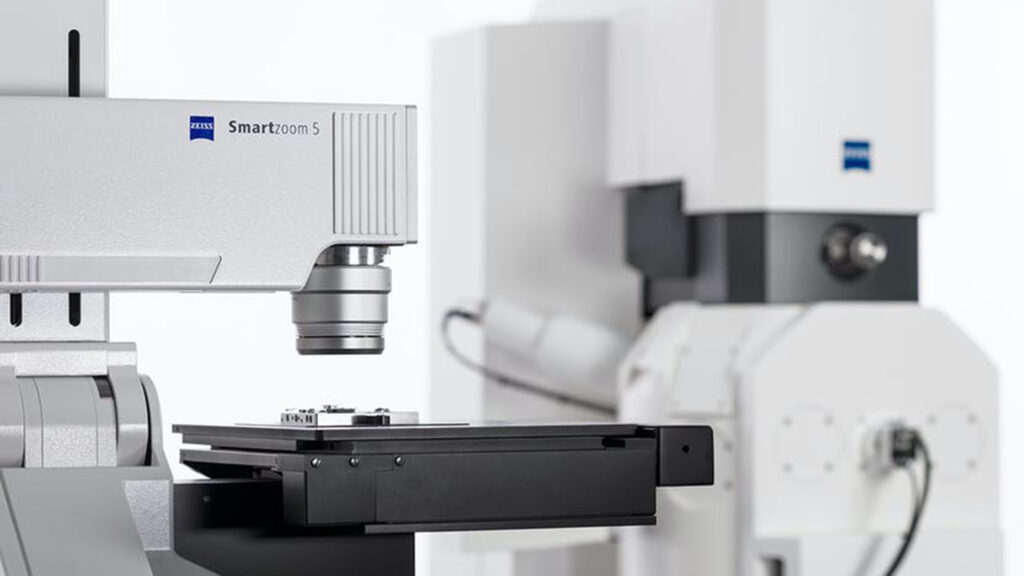National Science Foundation awarded Lafayette a grant to acquire cutting-edge scanning electron microscope
By Katie Neitz
This fall, Lafayette will become home to a Carl Zeiss EVO scanning electron microscope (SEM), a powerful, sophisticated piece of equipment that will advance the research of faculty and students across several disciplines.
The EVO allows imaging of a variety of materials at the nanoscale, using different detection modes, including correlation of electron microscopy and optical microscopy.
Faculty and students from biology, chemical and biomechanical engineering, civil engineering, environmental science, geology, neuroscience, and physics will use the EVO to advance their research.

A Carl Zeiss EVO scanning electron microscope will be housed in Rockwell this fall.
“The EVO will allow my research students to characterize nanoparticles with a degree of detail that previously was not possible at Lafayette,” says Zoe Boekelheide, assistant professor of physics. “In the past, we had to travel to other institutions or send samples to collaborators to get this kind of resolution.
“In my research, it’s important to know details like particle size and shape, as well as how the particles interact to form larger nanostructures. Later, when we do magnetic measurements, we can correlate those measurements to the physical details of the structures to understand why they behave the way they do.”
The National Science Foundation awarded Lafayette the grant to acquire the SEM, which will be housed in Rockwell Integrated Sciences Center. Such equipment is relatively rare at an undergraduate institution, but Lafayette faculty were able to make a strong case for the SEM enabling high-level research and educational opportunities.
“We’ve had the vision to bring this cutting-edge SEM to Lafayette for years, and it’s very exciting to see it happening,” says James Dearworth, associate professor of biology, who will use the SEM to further his understanding of photo reception in turtles’ eyes. “It’s a sophisticated piece of equipment many faculty and students will be able to use in a hands-on fashion. But we will also be able to use it as a tool of demonstration—I can televise and record my work as I use it, so students who are in a different location can be engaged.”
Tamara Carley, assistant professor of geology, is eager to use the SEM to investigate compositional zoning in minerals.
“It will permit us to reconstruct histories of magmatic evolution and destabilization leading up to hazardous volcanic eruptions,” Carley says. “This powerful research tool will be readily available for research students and students in my classes. It elevates our teaching and research potential to the next level.”
Installation of the SEM is expected to occur in October.
